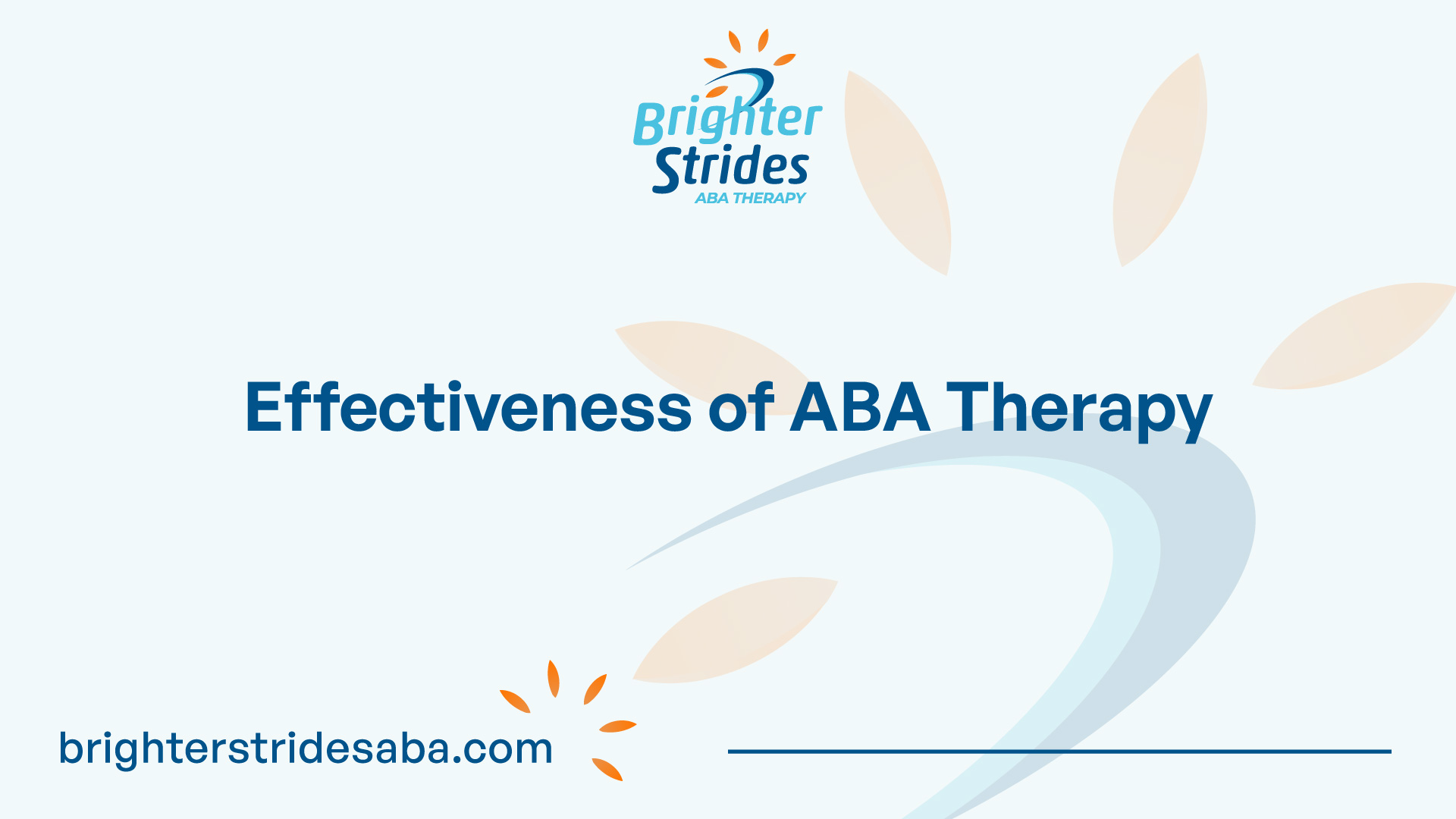
Understanding ABA Therapy
Applied Behavior Analysis (ABA) therapy is widely recognized as an effective and evidence-based treatment for individuals with autism spectrum disorder (ASD). This section will provide an understanding of the core principles of ABA and highlight the benefits of this therapeutic approach.
Core Principles of ABA
ABA therapy is based on the principles of behaviorism, which emphasize the importance of understanding and modifying behavior through systematic observation and analysis. The core principles of ABA include:
- Positive Reinforcement: ABA therapy utilizes positive reinforcement as one of its main strategies. This involves providing rewards or valued consequences for desired behaviors, which increases the likelihood of those behaviors being repeated over time. By focusing on reinforcing positive behaviors, ABA therapy aims to bring about positive behavior change.
- Individualized Approach: ABA therapy recognizes that each individual with autism is unique and has their own strengths, challenges, and learning style. Treatment plans are personalized to address the specific needs of the individual, taking into account their age, abilities, interests, and goals. This individualized approach allows for targeted interventions and maximizes the effectiveness of the therapy.
- Data-Driven Decision Making: ABA therapy relies on data collection and analysis to guide treatment decisions and measure progress. Observational data is systematically collected to track behavior patterns, monitor skill acquisition, and identify areas for improvement. This data-driven approach enables therapists to make informed adjustments to the treatment plan and ensure that interventions are effective.
Benefits of ABA Therapy
The benefits of ABA therapy for individuals with autism are well-documented and supported by scientific research. Some of the key benefits include:
- Skill Development: ABA therapy focuses on teaching new skills to individuals with autism. This can include a wide range of areas such as communication, social skills, self-care, academic skills, and independence. By breaking down complex skills into smaller, achievable steps, ABA therapy helps individuals with autism acquire new skills and reach their full potential.
- Behavior Reduction: ABA therapy also addresses challenging behaviors that may interfere with daily functioning and social interactions. By identifying the underlying causes of these behaviors and implementing behavior modification techniques, ABA therapy aims to reduce problem behaviors and replace them with more appropriate and adaptive behaviors [4].
- Generalization of Skills: ABA therapy focuses on promoting the generalization of skills across different settings and individuals. This means that the skills learned in therapy sessions are practiced and reinforced in real-life situations, allowing individuals with autism to apply their newly acquired skills in a variety of contexts.
- Improved Quality of Life: ABA therapy can have a profound impact on the overall quality of life for individuals with autism and their families. By helping individuals develop essential life skills, improve social interactions, and reduce challenging behaviors, ABA therapy aims to enhance independence, promote inclusion, and improve overall well-being [2].
In conclusion, ABA therapy is grounded in the core principles of behaviorism, employing positive reinforcement and individualized approaches to support individuals with autism. The therapy offers numerous benefits, including skill development, behavior reduction, generalization of skills, and improved quality of life. By embracing ABA therapy, individuals with autism can unlock their potential and make meaningful progress in various aspects of their lives.

Effectiveness of ABA Therapy
ABA therapy has proven to be an effective and widely recognized treatment for individuals with autism and related developmental disorders. The scientific community has extensively studied and established the efficacy of ABA therapy, and it has garnered support from organizations such as the US Surgeon General and the American Psychological Association.
Scientific Backing for ABA
For over six decades, ABA therapy has been utilized to assist children with autism and related developmental disorders. ABA therapy focuses on the application of behavioral principles to bring about meaningful behavior change. Through systematic observation and analysis of behavior, ABA therapists design and implement strategies that promote positive behaviors and reduce challenging behaviors.
More than 20 studies have demonstrated the positive impact of intensive and long-term ABA therapy on children with autism. These studies have shown significant improvements in intellectual functioning, language development, daily living skills, and social functioning [1]. The evidence consistently supports the use of ABA therapy as an effective intervention for individuals on the autism spectrum.
Long-Term Outcomes of ABA
ABA therapy has shown promising long-term outcomes for individuals who receive early and intensive intervention. Research has indicated that children who undergo ABA therapy experience sustained improvements in various areas of functioning well into adulthood. These areas include increased independence, better social relationships, enhanced communication skills, and improved quality of life.
The individualized nature of ABA therapy, tailored to each learner’s skills, needs, interests, preferences, and family situation, contributes to the positive long-term outcomes. A board-certified behavior analyst (BCBA) designs and oversees ABA programs, ensuring that they are customized to address the unique requirements of each individual [1]. The involvement of a BCBA ensures that the therapy is individualized and comprehensive, maximizing the potential for positive outcomes.
In summary, ABA therapy is an evidence-based and widely recognized treatment for individuals with autism. It has been scientifically supported by numerous studies and is endorsed by reputable organizations. The long-term outcomes of ABA therapy highlight the effectiveness of this intervention in improving various aspects of individuals’ lives. Through the application of behavioral principles and individualized treatment plans, ABA therapy continues to unleash the potential of individuals with autism, promoting positive behavior change and fostering meaningful progress.
Read more about: Personalized ABA Therapy for Autism
Implementing ABA Therapy
When it comes to implementing ABA therapy, a well-structured process and suitable therapy settings are essential for its effectiveness. ABA therapy sessions typically involve two types of training: Discrete Trial Training (DTT) and Natural Environment Training (NET) [6].
ABA Therapy Process
The ABA therapy process begins with assessments and observations to understand the individual’s strengths, challenges, and specific needs. This information is used to develop a personalized treatment plan that targets the individual’s unique goals and areas of improvement. The treatment plan is designed to challenge the child appropriately without causing discouragement.
ABA therapy focuses on breaking down desirable behaviors into manageable steps. During therapy sessions, children are rewarded as they complete each step, reinforcing positive behaviors and promoting skill acquisition. The therapy helps children learn which behaviors are appropriate for different situations and aims to teach them new skills.
ABA Therapy Settings
ABA therapy can be delivered in various settings, depending on the individual’s needs and preferences. These settings may include the individual’s home, clinic, school, or community. The choice of setting is determined by factors such as the child’s comfort level, availability of resources, and the goals identified in the treatment plan.
In-home ABA therapy allows for personalized sessions in a familiar environment, providing opportunities to practice skills in real-life situations. Clinic-based ABA therapy offers a structured and controlled environment with access to specialized resources and equipment. School-based ABA therapy integrates therapy sessions into the child’s school routine, facilitating generalization of skills to the classroom setting. Community-based ABA therapy focuses on developing skills in real-world settings, such as parks or supermarkets, to enhance social interactions and community integration [2].
It’s important to note that ABA therapy is typically delivered by a team of professionals, including Board Certified Behavior Analysts (BCBAs) and Registered Behavior Technicians (RBTs). These professionals play a crucial role in providing individualized treatment, monitoring progress, and adjusting the therapy program as needed.
By following the ABA therapy process and selecting suitable therapy settings, individuals with autism can receive the support and guidance they need to acquire new skills, improve social behavior, and enhance their overall quality of life. ABA therapy offers a structured and evidence-based approach to help individuals with autism thrive and reach their full potential.

Cost Considerations
When considering ABA therapy, it’s important to be mindful of the associated costs. While the benefits of ABA therapy are significant, understanding the financial implications is essential for families seeking this intervention for their loved ones with autism.
Average Cost of ABA Therapy
The average annual cost of ABA therapy is approximately $62,400 per year, assuming 10 hours of therapy per week for 52 weeks at a typical rate of $120 per hour. It’s worth noting that the specific cost can vary depending on factors such as location, the experience of the therapist, and the intensity and duration of the therapy program.
To provide a clearer picture, let’s consider the cost breakdown for ABA therapy. The table below outlines the estimated costs based on the average rates mentioned above:

It’s important to remember that these figures are averages and can vary significantly depending on individual circumstances and location.
Financial Assistance Options
To alleviate the financial burden, various financial assistance options are available to support families in covering the costs of ABA therapy. Here are some options to consider:
- Insurance Coverage: Many insurance companies are mandated to cover ABA therapy in several states. With insurance coverage, families may only need to pay the deductible amount for each session, rather than the full cost of $120 per hour. It’s advisable to check with your insurance provider to understand the coverage and any potential limitations.
- School-Funded ABA Therapy: In some cases, ABA therapy can be covered through schools. If the application is approved by the school, the therapy sessions will be supervised by Board Certified Behavior Analysts or Board Certified Assistant Behavior Analysts, and the child’s progress will be documented through the school’s individualized education plan.
- Private Payment Options: Private payment options can involve employers or work organizations using the child’s trust to cover a portion of the educational expenses. While this may not cover the full cost, it can reduce the financial burden by up to 80% of the total cost.
It’s essential to explore these financial assistance options and consult with relevant professionals to determine the best approach for your specific situation. Additionally, costs and coverage may vary depending on the state or region. For example, in Illinois, insurance typically covers 90-95% of ABA therapy expenses, resulting in patients paying between $1,500 and $3,000 per year for therapy, excluding monthly premiums [8].
By considering the average cost of ABA therapy and exploring available financial assistance options, families can make informed decisions regarding their budget and ensure access to this beneficial intervention for their children with autism.
Personalizing ABA Programs
ABA therapy is a highly individualized approach that caters to the unique needs of each individual with autism. This personalization is achieved through the role of a board-certified behavior analyst (BCBA) and the development of individualized treatment plans.
Role of BCBA in ABA Therapy
The BCBA plays a crucial role in the design and implementation of ABA programs. They are experts in the field of behavior analysis and have undergone extensive training and certification. The BCBA works closely with the individual, their family, and other members of the therapy team to develop a comprehensive treatment plan.
According to Autism Speaks, the BCBA customizes the ABA program to each learner’s skills, needs, interests, preferences, and family situation. They conduct a detailed assessment to gain a thorough understanding of the individual’s strengths and areas for improvement. Based on this assessment, the BCBA formulates specific treatment goals that are tailored to the individual’s age and ability level.
Throughout the therapy process, the BCBA provides ongoing supervision, guidance, and support to ensure that the treatment plan is effectively implemented. They monitor progress, make adjustments as needed, and collaborate with the therapy team to ensure consistency and success.
Individualized Treatment Plans
ABA therapy is characterized by its focus on individualized treatment plans. These plans are tailored to challenge the child appropriately without causing discouragement, as mentioned by Therapeutic Pathways. The treatment plan is developed by the BCBA based on the assessment of the individual’s needs and goals.
The individualized treatment plan outlines specific objectives and interventions to address the individual’s unique challenges and promote desired behaviors. It breaks down desirable behaviors into manageable steps, allowing children to be rewarded as they progress through each step. The therapy helps children learn which behaviors are appropriate for different situations and aims to teach them new skills, as explained by Therapeutic Pathways.
The treatment plan may include various strategies and techniques, such as behavior modification, positive reinforcement, and structured teaching methods. The BCBA continuously evaluates the effectiveness of the treatment plan and makes adjustments as necessary to ensure progress and success.
By personalizing ABA programs through the role of the BCBA and the development of individualized treatment plans, ABA therapy can effectively target the specific needs of each individual with autism. This tailored approach allows for the acquisition of missing skills, the replacement of challenging behaviors, and overall progress towards greater independence and quality of life.
Impact of ABA Therapy
ABA therapy, also known as Applied Behavior Analysis therapy, has a significant impact on individuals with autism. This evidence-based approach focuses on implementing behavior strategies and interventions to improve various aspects of a person’s life. Two key areas where ABA therapy demonstrates remarkable benefits are social behavior improvements and skill development in children.
Social Behavior Improvements
ABA therapy plays a crucial role in helping individuals with autism navigate social situations and enhance their social behavior. Through behavioral intervention, individuals can learn effective communication skills, develop social awareness, and improve their interactions with others. This is especially important for individuals who may struggle with fluent language skills.
According to a study published by the National Center for Biotechnology Information (NCBI), ABA therapy can prepare individuals with autism to be their own best advocates. It empowers them to showcase their capabilities, even if they face challenges in expressing themselves verbally. By addressing specific social behavior goals, such as turn-taking, initiating conversations, and maintaining eye contact, ABA therapy helps individuals with autism build more meaningful connections with peers, family, and the community.
Skill Development in Children
ABA therapy is highly effective in helping children with autism develop essential skills that are crucial for their overall well-being. While specific studies may not exist on certain skills, parents and therapists play a vital role in teaching these skills through behavioral intervention and data collection, as mentioned in the NCBI study.
ABA therapy focuses on teaching a wide range of skills, including self-help skills like sleeping through the night and using the bathroom, as well as academic and cognitive skills. The therapy is tailored to challenge the child appropriately without causing discouragement. ABA therapy helps children with autism acquire and generalize skills that enhance their independence and quality of life.
By targeting specific skill areas such as speech and language, cognition, self-awareness, and social skills, ABA therapy equips children with autism with the tools they need to succeed in various settings, including school and home. It promotes their overall development, self-confidence, and ability to engage meaningfully with their surroundings.
In summary, ABA therapy has a profound impact on individuals with autism, particularly in terms of social behavior improvements and skill development in children. By implementing evidence-based strategies and interventions, ABA therapy empowers individuals to navigate social situations, communicate effectively, and develop essential life skills. It helps individuals reach their potential, enhance their social connections, and become valued members of their communities.
Read about: Evaluating the Social Impact of ABA Interventions

 We've just released an article!
Check out our blog!
We've just released an article!
Check out our blog!



